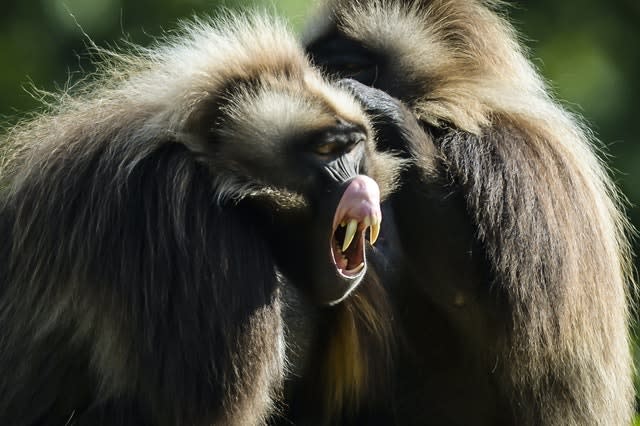Voice box in primates ‘evolved faster’ compared with carnivores
The voice box in primates such as gorillas and chimpanzees may have evolved more rapidly compared with other mammals, scientists believe.
In a study published in PLOS Biology, researchers found that, when compared with meat-eating mammals such as tigers or foxes, the voice box, or larynx, of primates is “significantly larger” in relation to their body size.
They also found that, within primates, voice boxes were diverse in function and more variable in size.
Although the findings do not specifically shed light on how humans, who also belong to this group of mammals, developed speech, the researchers believe their work demonstrates an “evolutionary flexibility” among primates which could help in understanding more about vocal communication.
Dr Jacob Dunn, reader in evolutionary biology at Anglia Ruskin University (ARU), who was one of the lead authors on the study, said: “Humans, as primates, live within a group of mammals in which there has been a quite interesting evolution of the larynx.
“You’ve got gibbons that sing like soprano singers, you’ve got howler monkeys that roar and have incredibly low frequencies, you’ve got tarsiers (small primates found in Southeast Asia) that produce ultrasound, and you have got humans who speak.

“So, within this primate group you’ve got a really amazing diversity of the uses of the larynx – and one of those is speech.
“There is an exciting opportunity to try and frame what we learn about this to help us better understand vocal communication amongst primates – including our own.”
The larynx is located in the neck and performs many important functions which involve swallowing, breathing, and voice production, which is why scientists believe this crucial organ to be a key area of evolution.
A team of researchers from Anglia Ruskin University worked with colleagues from Stanford University in the US, and the University of Vienna in Austria, on what is thought to be first large-scale study into the evolution of the larynx.
They looked at scans of voice box specimens of 55 different species and developed 3D computer models to study the organs in detail.
The scientists found that the voice box of primates is on average 38% larger, after taking into account individual body length.

They also found that the sizes of these organs varied relative to body size among primates, whereas carnivorans followed more of a “fixed larynx-size to body-size ratio”.
Dr Dunn said: “This study demonstrates clear differences in the evolution of the larynx between groups of mammals.
“Specifically, we have shown for the first time that the primate larynx is larger, less closely linked to body size, and under faster rates of evolution than the carnivoran larynx.”
As part of the next steps, the researchers are keen to understand more about the human voice box.
Dr Dunn said: “Ultimately, we are interested in trying to better understand the evolution of language and that’s one of our key research areas.
“One thing I am particularly interested in is the evolution of the human voice box, where we are looking at the hyoid bone (a horse-shaped bone in the neck) – which can provide clues about the evolution of speech.”

 Yahoo News
Yahoo News 